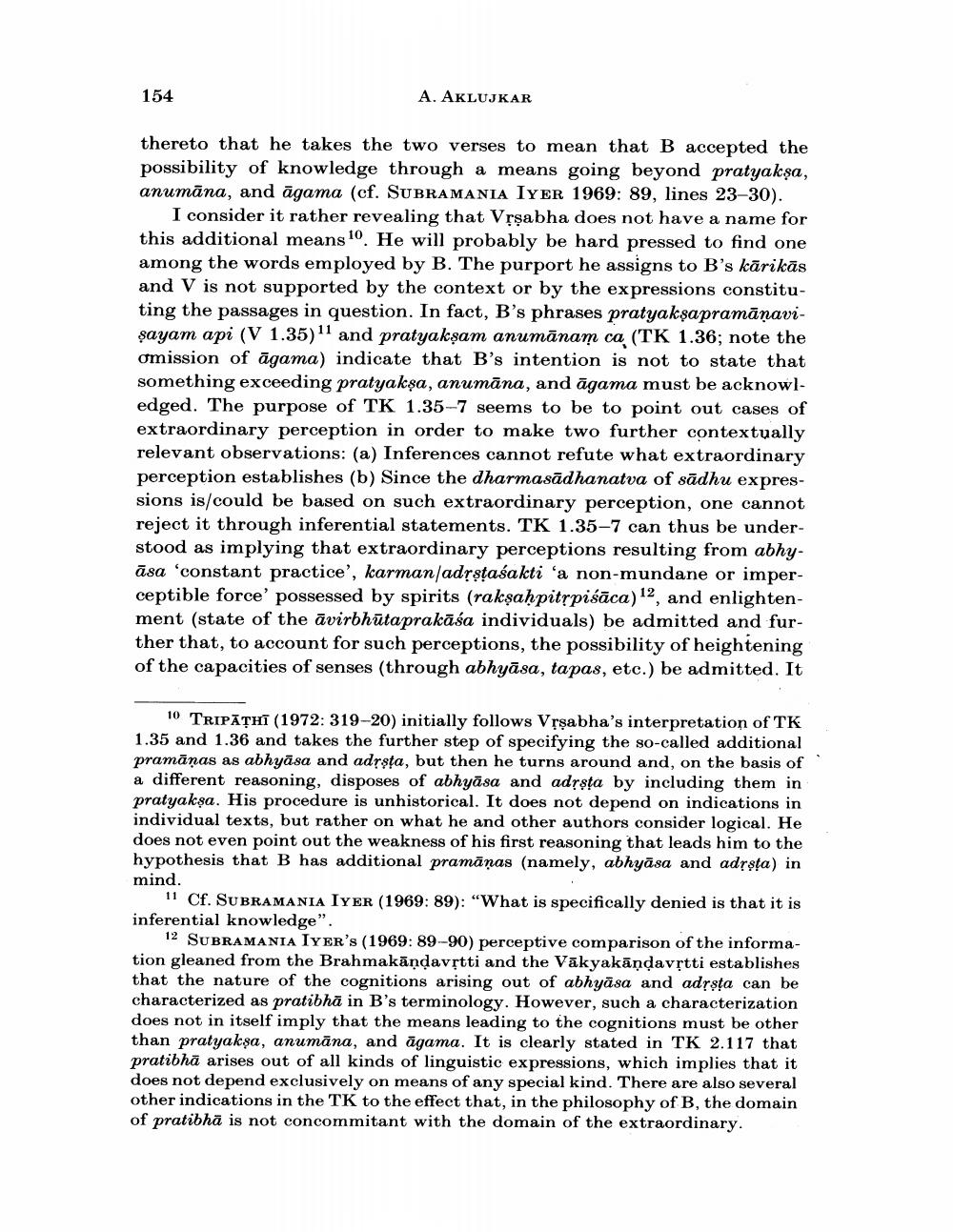Book Title: Number Of Pramanas According To Bhartrhari Author(s): Ashok Aklujkar Publisher: Ashok Aklujkar View full book textPage 4
________________ 154 A. AKLUJKAR thereto that he takes the two verses to mean that B accepted the possibility of knowledge through a means going beyond pratyakşa, anumāna, and āgama (cf. SUBRAMANIA IYER 1969: 89, lines 23-30). I consider it rather revealing that Vrşabha does not have a name for this additional means 10. He will probably be hard pressed to find one among the words employed by B. The purport he assigns to B's kārikās and V is not supported by the context or by the expressions constituting the passages in question. In fact, B's phrases pratyaksapramāņavişayam api (V 1.35)" and pratyakşam anumānam ca (TK 1.36; note the omission of agama) indicate that B's intention is not to state that something exceeding pratyakşa, anumāna, and āgama must be acknowledged. The purpose of TK 1.35-7 seems to be to point out cases of extraordinary perception in order to make two further contextually relevant observations: (a) Inferences cannot refute what extraordinary perception establishes (b) Since the dharmasādhanatva of sādhu expressions is/could be based on such extraordinary perception, one cannot reject it through inferential statements. TK 1.35–7 can thus be understood as implying that extraordinary perceptions resulting from abhyāsa constant practice', karman/adsstasakti 'a non-mundane or imperceptible force' possessed by spirits (rakṣaḥpitrpiśāca)12, and enlightenment (state of the āvirbhūtaprakāśa individuals) be admitted and further that, to account for such perceptions, the possibility of heightening of the capacities of senses (through abhyāsa, tapas, etc.) be admitted. It 10 TRIPATHI (1972: 319-20) initially follows Vrşabha's interpretation of TK 1.35 and 1.36 and takes the further step of specifying the so-called additional pramānas as abhyasa and adrsta, but then he turns around and, on the basis of a different reasoning, disposes of abhyāsa and adrsta by including them in pratyakşa. His procedure is unhistorical. It does not depend on indications in individual texts, but rather on what he and other authors consider logical. He does not even point out the weakness of his first reasoning that leads him to the hypothesis that B has additional pramānas (namely, abhyāsa and adreta) in mind. 11 Cf. SUBRAMANIA IYER (1969: 89): "What is specifically denied is that it is inferential knowledge". 12 SUBRAMANIA IYER's (1969: 89-90) perceptive comparison of the information gleaned from the Brahmakāņdavịtti and the Vākyakāndavṛtti establishes that the nature of the cognitions arising out of abhyāsa and adreta can be characterized as pratibhā in B's terminology. However, such a characterization does not in itself imply that the means leading to the cognitions must be other than pratyaksa, anumāna, and āgama. It is clearly stated in TK 2.117 that pratibha arises out of all kinds of linguistic expressions, which implies that it does not depend exclusively on means of any special kind. There are also several other indications in the TK to the effect that, in the philosophy of B, the domain of pratibha is not concommitant with the domain of the extraordinary.Page Navigation
1 2 3 4 5 6 7 8
